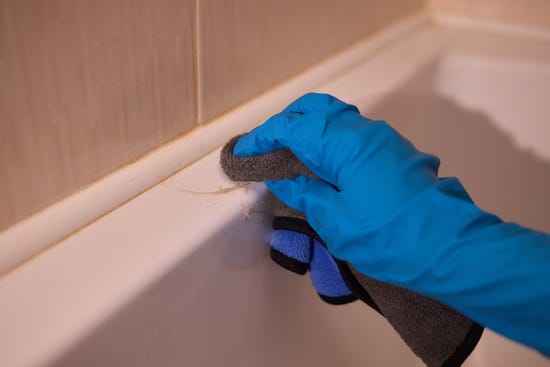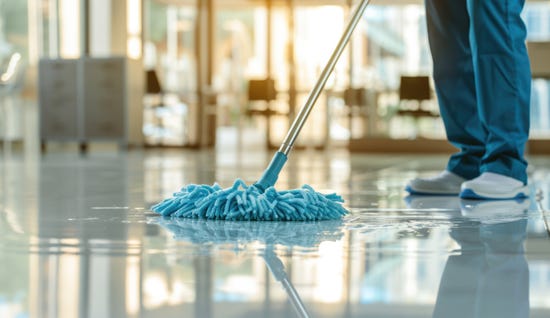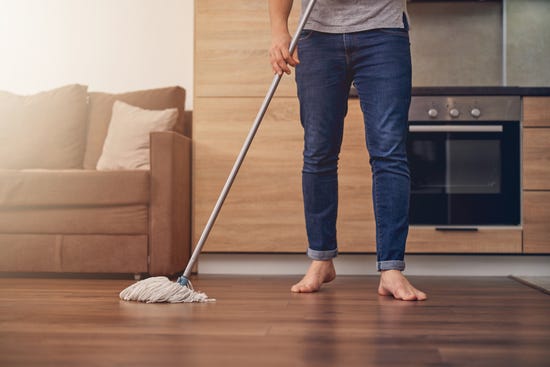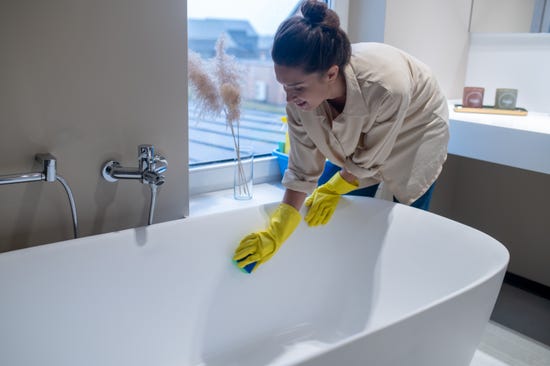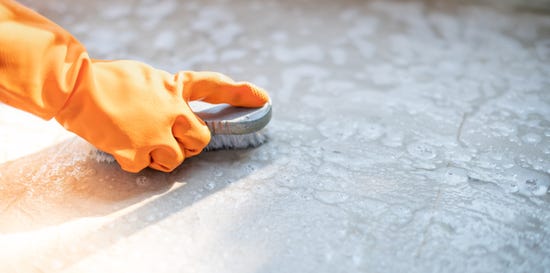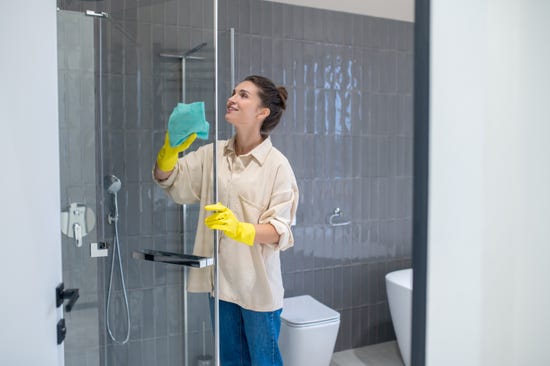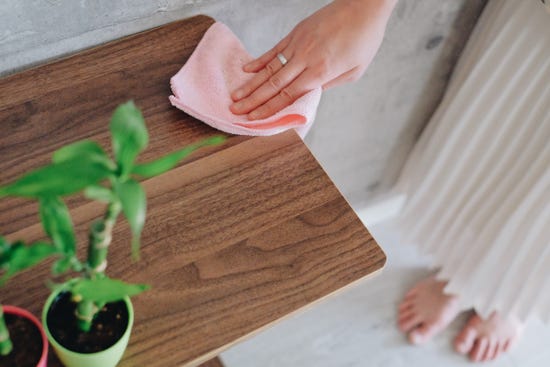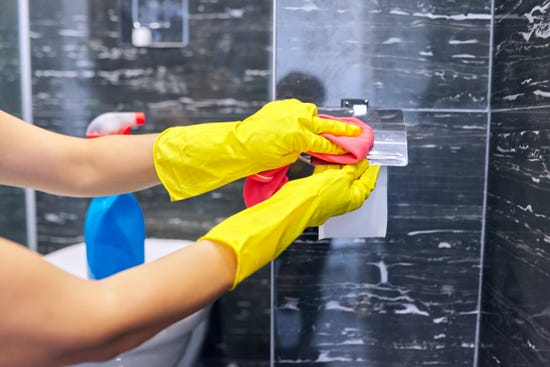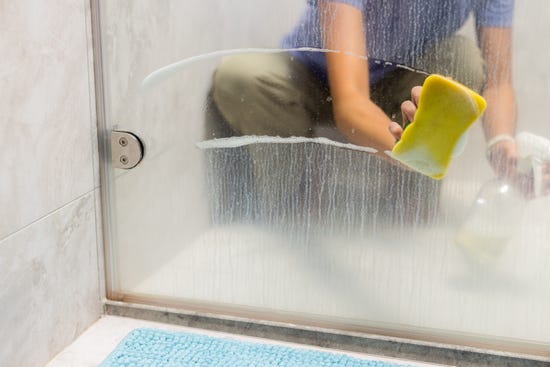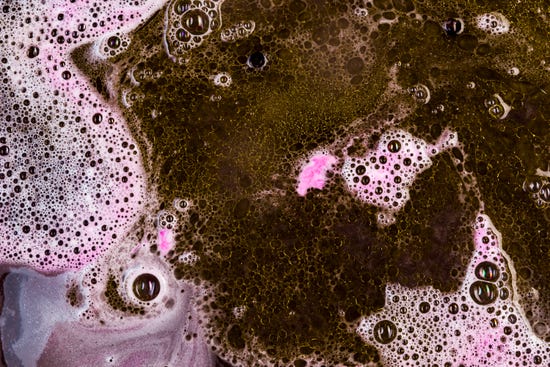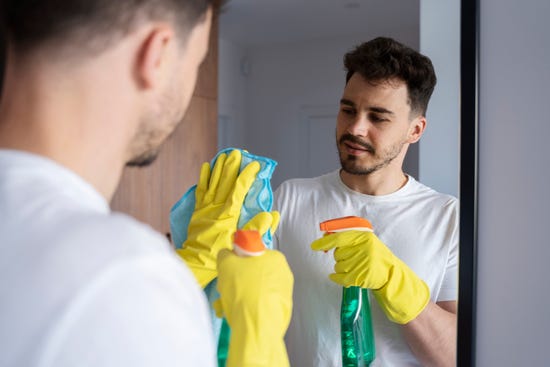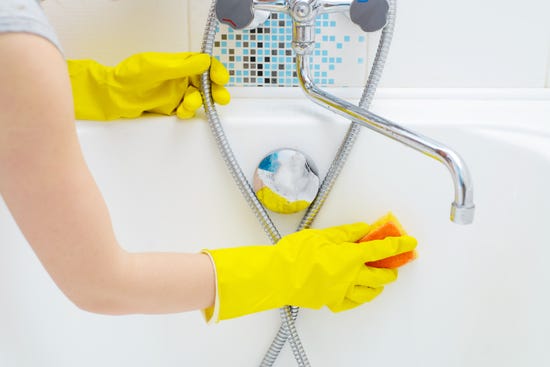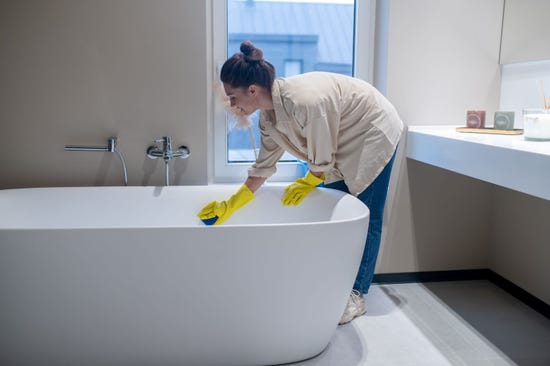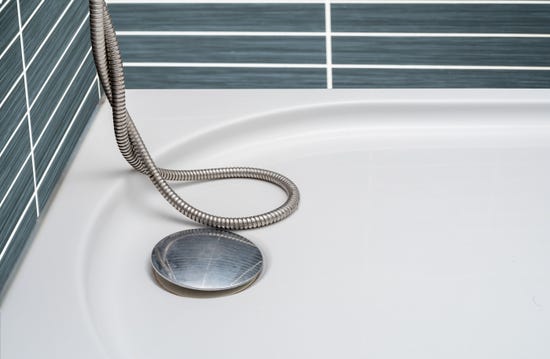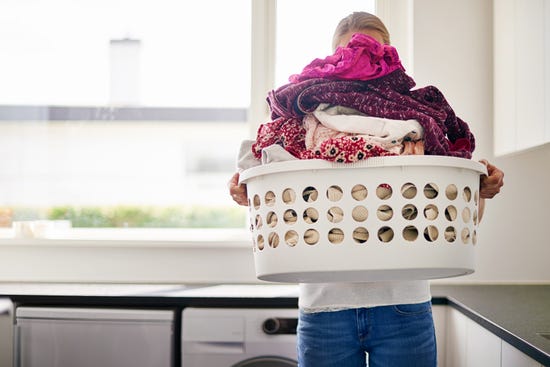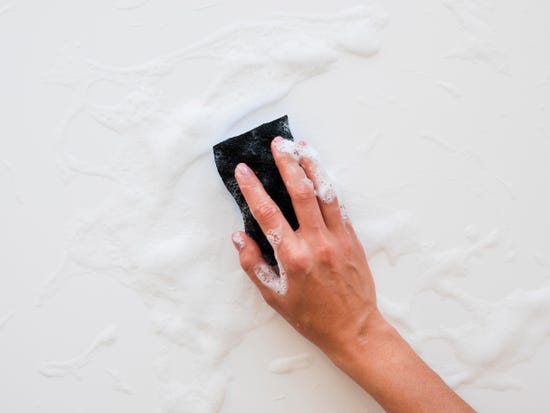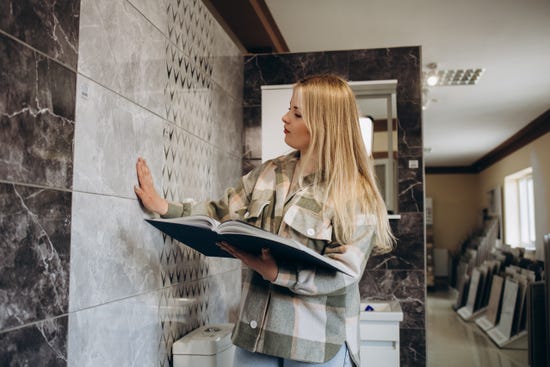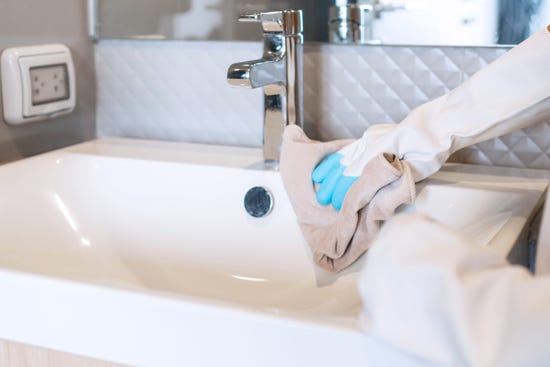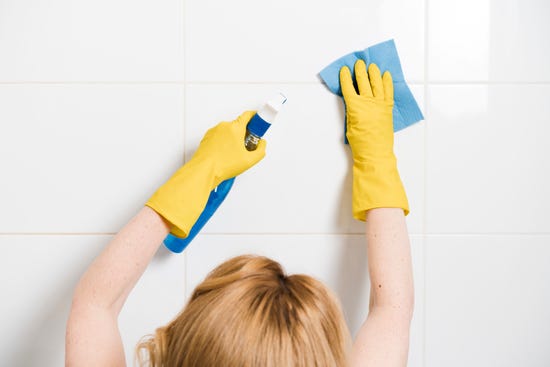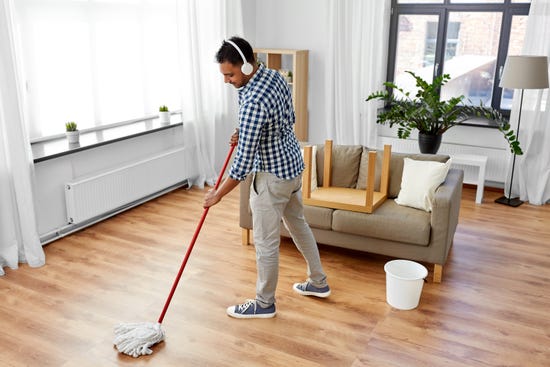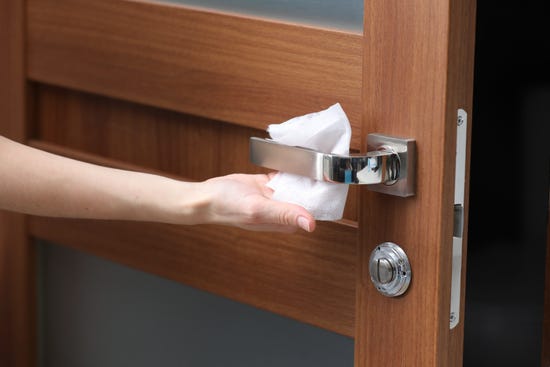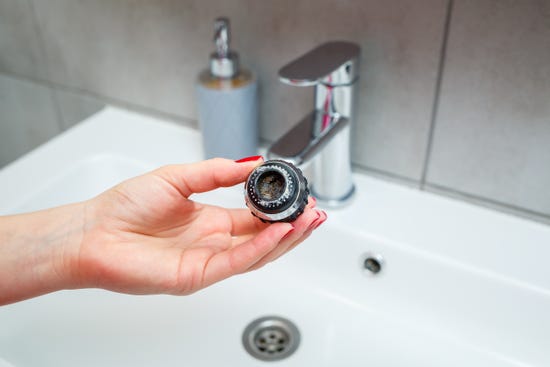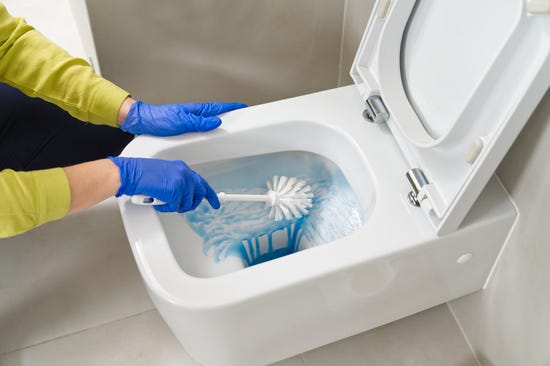
How Often to Clean Your Bathroom for Optimal Hygiene
How Often to Clean Your Bathroom for Optimal Hygiene
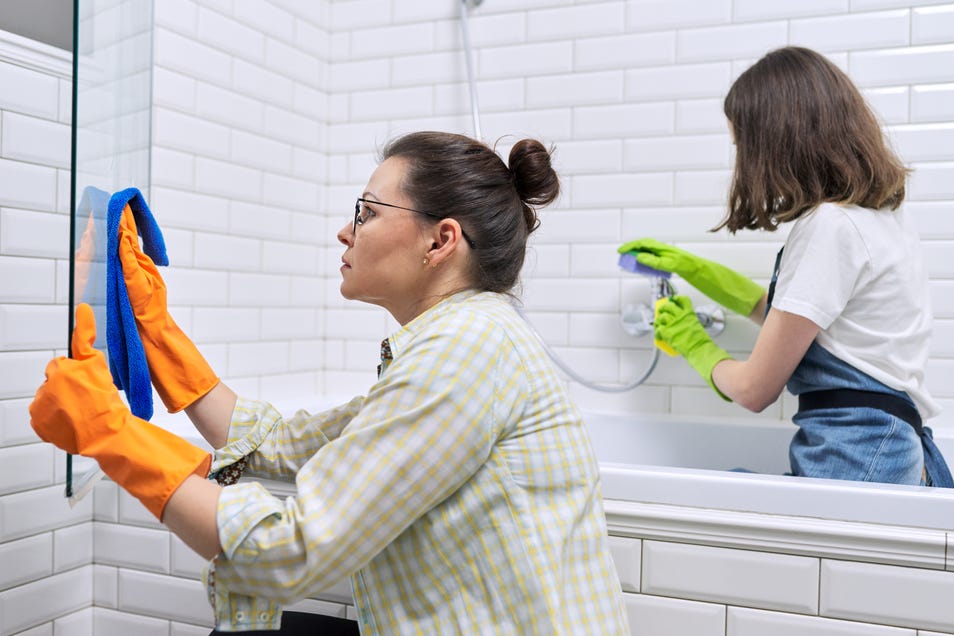
As one of the most frequently used areas, the bathroom often becomes one of the dirtiest and germiest spots in our homes, offices, restaurants, and other public spaces.
With constant traffic, moisture, and humidity, bathrooms quickly accumulated dirt, dust, grime, bacteria, soap scum, and other mineral deposits—highlighting the importance of not just regular cleaning, but also disinfecting with powerful, reliable, and effective bathroom cleaning products.
But knowing your bathroom needs attention is different from knowing how often each surface should be cleaned. Certain bathroom surfaces require daily cleaning, while others can be tackled weekly or monthly.
To help take out the guesswork, we’ve developed a dependable cleaning schedule for the most commonly used bathroom surfaces.
Follow this guide to keep your bathroom looking fresh, promote a healthier and germ-free environment, and a true wellness oasis.
1. How often to clean bathroom sink
Cleaning frequency: once a week
Bathroom sinks are a hotbed for various germs, bacteria, and microorganisms due to stagnant pools of water, soap scum, mineral deposits, and other residues.
Clean and disinfect the bathroom sink at least once a week using Lysol® Bathroom Foam Cleaner Spray - Summer Fresh and a sponge or soft bristle brush. After cleaning and every use, dry the sink using a fresh and clean microfiber cloth.
This cleaner's powerful foaming action eliminates germs, bacteria, soap scum, hard water stains and kills 99.99% of viruses and bacteria*, leaving your sink sparkling and smelling fresh.
2. How often to clean beneath the bathroom sink
Cleaning frequency: every two to four weeks
The area beneath the bathroom sink requires less cleaning than the sink itself. Still, with frequent use, it collects soap, toothpaste, grime, and other residues, which can slow or eventually clog the drain and lead to unpleasant odours.
Therefore, it is best to clean the area under the bathroom at least once every two to four weeks to prevent any type of soap, toothpaste, or mineral buildup, allergens, and bacteria.
3. How often to clean bathroom countertop
Cleaning frequency: once a day
Clean the bathroom countertop once a day, preferably at the end of each day, to remove toothpaste or water spills, stray hairs, or stains.
Wipe down the countertop with a non-abrasive bathroom cleaner, such as Lysol® Bathroom Foam Cleaner Spray - Summer Fresh, and a microfiber cloth to prevent buildup that can later on cause big problems. If you prefer a different cleaning format, check out Lysol® Disinfectant Wipes.
4. How often to clean shower
Cleaning frequency: once a week
Clean the bathroom shower at least once a week, but keeping it dry using a squeeze or microfiber cloth after every use also helps.
Depending on how often you use the shower, its moisture content, and increased humidity, mold and mildew often attach themselves to its surfaces.
To tackle mold, mildew, soap scum, and tough stains on your shower surface, use Lysol® Mold & Mildew Bathroom Bleach Cleaner—formulated to be compatible with most shower materials. Pair it with a soft bristle brush for effective scrubbing. This powerful cleaner not only removes buildup, but also disinfects and kills 99.99% of viruses and bacteria. After cleaning, be sure to rinse and dry the surfaces with a squeegee or cloth to prevent moisture buildup.
5. How often to clean bathroom toilet
Cleaning frequency: once a week
The toilet harbours some of the most dangerous germs, bacteria, and viruses, including potentially harmful ones like E. coli and other pathogens. If left unchecked, these can lead to serious infections and illnesses, preventing a healthier environment for you and your family.
Clean and disinfect your toilet by pouring 120 mL of Lysol® Disinfectant Toilet Bowl Cleaner - Power from under the rim into the bowl, focusing on stained and hard-to-reach areas.
Allow the cleaner to sit for at least 10 minutes before using a toilet brush to scrub the inside of the toilet bowl, including under the rim. Next, flush the toilet a couple of times.
Additionally, with every use, bacteria and viruses are dispersed onto the toilet's external parts, such as the seat, the handle, and other surfaces, causing stains, discoloration, and the spread of various diseases.
Remember to wipe down these surfaces with Lysol® Bathroom Foam Cleaner Spray - Summer Fresh and a microfiber cloth to prevent infections, stomach issues, respiratory problems, and other conditions, some of which may even be life-threatening.
*When used as directed.
FAQs
Can a clean-looking bathroom still be hiding germs?
You bet. Even when your bathroom looks squeaky clean, invisible germs can linger on damp surfaces like sink taps, shower curtains, and toilet handles. The best defense? Disinfect regularly with Lysol® to stop bacteria and viruses in their tracks. Our products are designed to kill 99.99% of viruses and bacteria when used as directed, keeping your home hygienic and germ-free.
How often should you clean your bathroom tiles?
You should clean your bathroom tiles once a week to reduce the amount of scrubbing, buildup, and wear and tear over time.
How often should you clean your bathtub?
Clean your bathtub every two weeks, with a thorough deep clean, about once a month.
What parts of the bathroom require daily cleaning?
High-touch surfaces like sinks, faucets, countertops, toilet seats, and handles require daily cleaning to prevent buildup and maintain hygiene.
What’s the secret to a bathroom that smells as clean as it looks?
It’s all about tackling odours at the source. Lysol® NeutraAir 2in1 doesn’t just mask smells—it eliminates odour-causing bacteria** and leaves behind a light, fresh scent. Bonus: pair it with our scented all-purpose cleaners for a double hit of clean and fresh. Choose from classic lemon or try the uplifting Brand New Day™ collection for a refreshing twist.
**On hard non-pourous surfaces when used as directed.



